At 9 a.m. McSorley’s Old Ale House is full of memories. At that early hour, the East Village New York bar is uncharacteristically empty and quiet. The floor is even naked, stripped of the previous night’s layer of sawdust.
The walls, shelves, and even light fixtures are covered in layer upon layer of historical documents, photos, clippings, artifacts, and knickknacks. Without the chatter of patrons or the familiar clink of glass beer mugs, you’re left with your own thoughts. Naturally one starts to ponder what has taken place over the last 163 years in this establishment since its founding. Was this the corner that Abraham Lincoln sat in when he stopped by?
While the walls don’t talk (or at least they haven’t to me) it’s not hard to understand why the institution has inspired so many essays, paintings, and poems. It’s only fitting that poet Geoffrey “Bart” Bartholomew has been bartending at McSorley’s since 1972. Even after decades on the job, his excitement about the bar’s stories, patrons, and the mementos they left behind is truly contagious.
ADVERTISEMENT
So it’s no surprise that his son, Rafe, raised on a steady diet of McSorley’s stories and cheese plates, wanted to follow in his father’s footsteps and work at the watering hole. He also went on to be a writer as well, and has penned a book about basketball in the Philippines and was an editor at the now defunct sports site Grantland. His latest book, Two and Two: McSorley’s, My Dad, and Me, which comes out Tuesday, is a bit closer to home and tells the story of his family’s involvement in the bar.
The charming memoir is a love letter to the enduringly popular establishment that will make you immediately thirsty for a few mugs of its beer and inspire a sojourn to the legendary Big Apple monument.
On a recent morning, Rafe and Bart gave me a tour of their favorite artifacts on display around the bar. Not only did they point out important objects that I’ve never noticed on numerous previous visits, but the tour also gave me an intimate look into their relationship with each other and, of course, with McSorley’s.
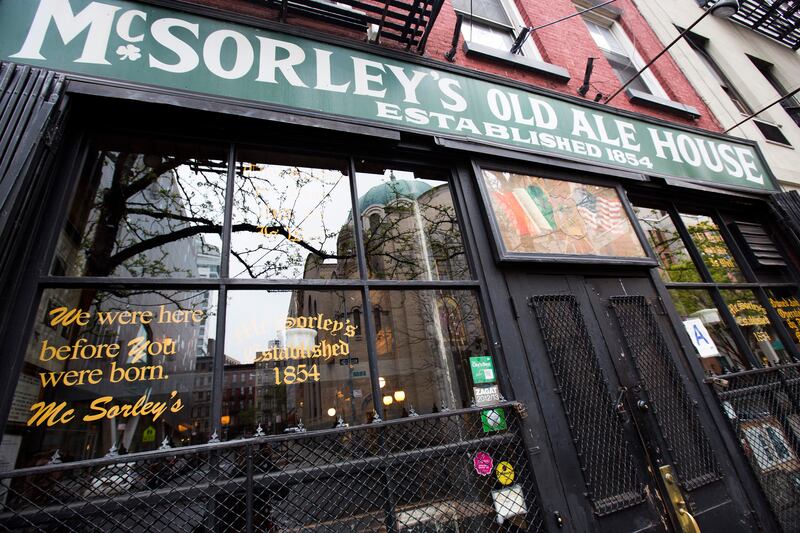
When McSorley’s opened in 1854, there were plenty of New York bars that offered a similar atmosphere, but even then, the establishment was able to distinguish itself and attracted a notable clientele. The window today reminds you of its legacy by simply stating, “We were here before you were born.”
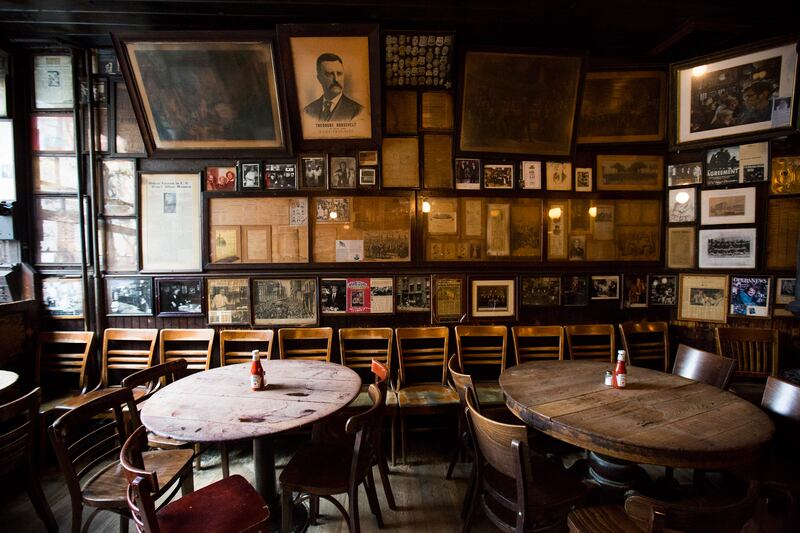
The walls of McSorley’s are covered with a range of clippings and photographs, including a poster for a young Theodore Roosevelt and an 1815 London Times article about Napoleon and the upcoming battle at Waterloo. It’s joined by a collection of badges that were donated to the bar by retiring police officers.
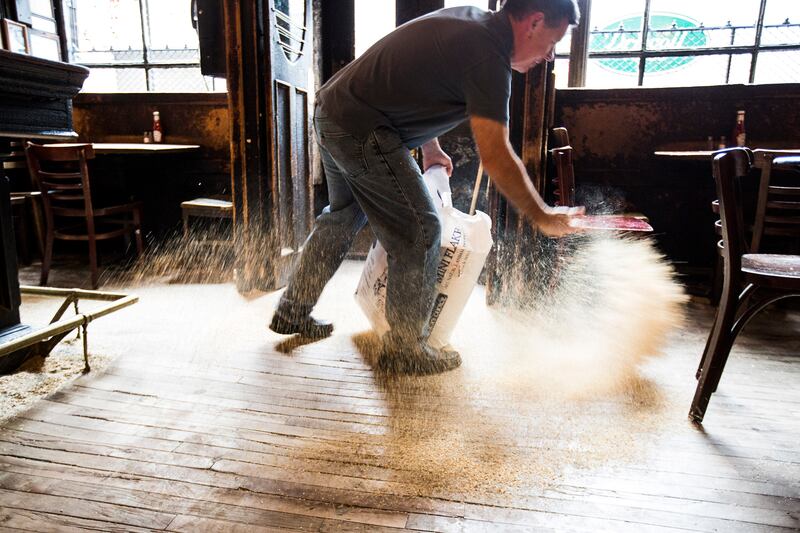
Every morning the bar gets a fresh layer of sawdust. While it was once common in watering holes, restaurants, and butcher shops across the city (it’s great for absorbing spills), a dusting of sawdust is now one of those old-timey touches that makes McSorley’s special and immediately transports you to a different era.
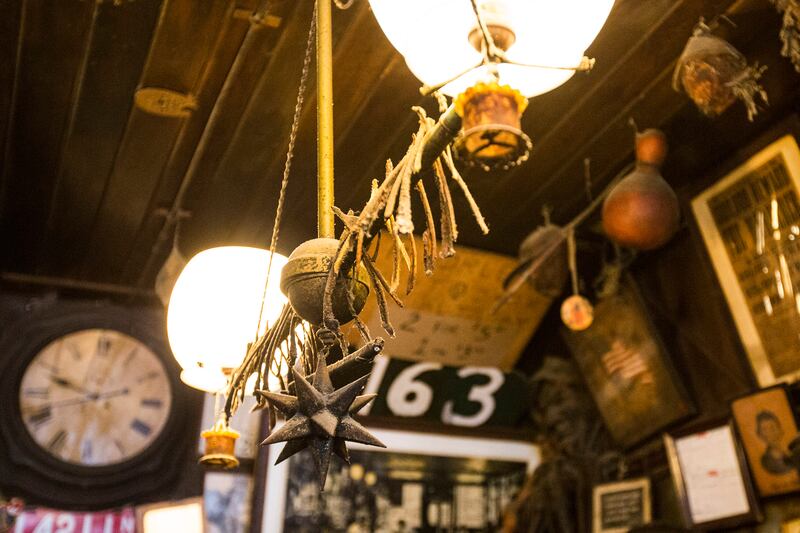
The most sacred of McSorley’s artifacts may be the wishbones hanging from the light fixture over the bar. They were placed there, according to lore, by soldiers before they shipped out for war. Those who were fortunate to survive took down a wishbone. The wishbones that remain hanging are a tribute to those men who never made it back. (However, the practice of hanging wishbones at McSorley’s may actually date back to an even earlier period.)
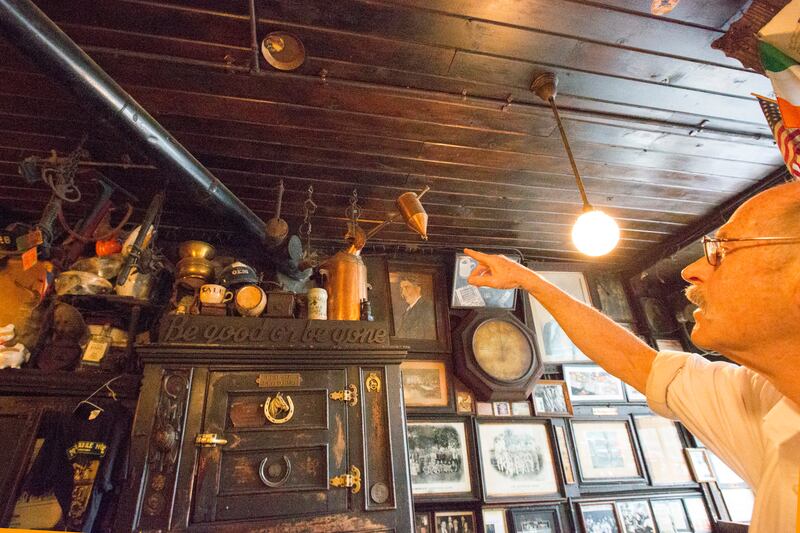
It’s easy miss this pair of handcuffs hanging from the ceiling but they are, naturally, quite special. “Around 1904 Houdini came in and they recognized him,” said Bart. “There was a cop here and he said, ‘Let’s see if you can get out of real handcuffs,’ and, of course, he did. And the cop donated them to McSorley’s. They’ve been up there ever since.”
They hang over another special item: “I have always loved the ice box,” said Rafe. “It may be the oldest part of the bar. We know that John McSorley bought it secondhand off of an 1800 clipper ship.” Originally, it was cooled by blocks of ice but has since been turned into a modern refrigerator. It is still used today to chill soda and, until the health department objected, it held the bar’s giant blocks of cheese for its famous cheese plates.
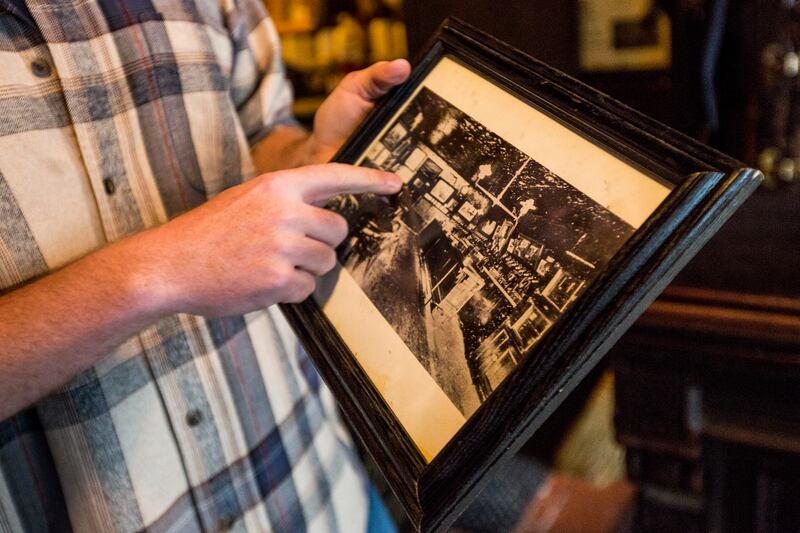
Not only did McSorley buy the icebox from the clipper ship, but the original ale pumps and the main part of the bar came from it as well. The bar top was extended in the 1920s at the beginning of Prohibition. This photo of McSorley’s, which shows the bar’s original configuration, dates back to roughly 1886 and looks eerily similar to what you find today. If you look closely, you’ll see that the back room is not open yet.
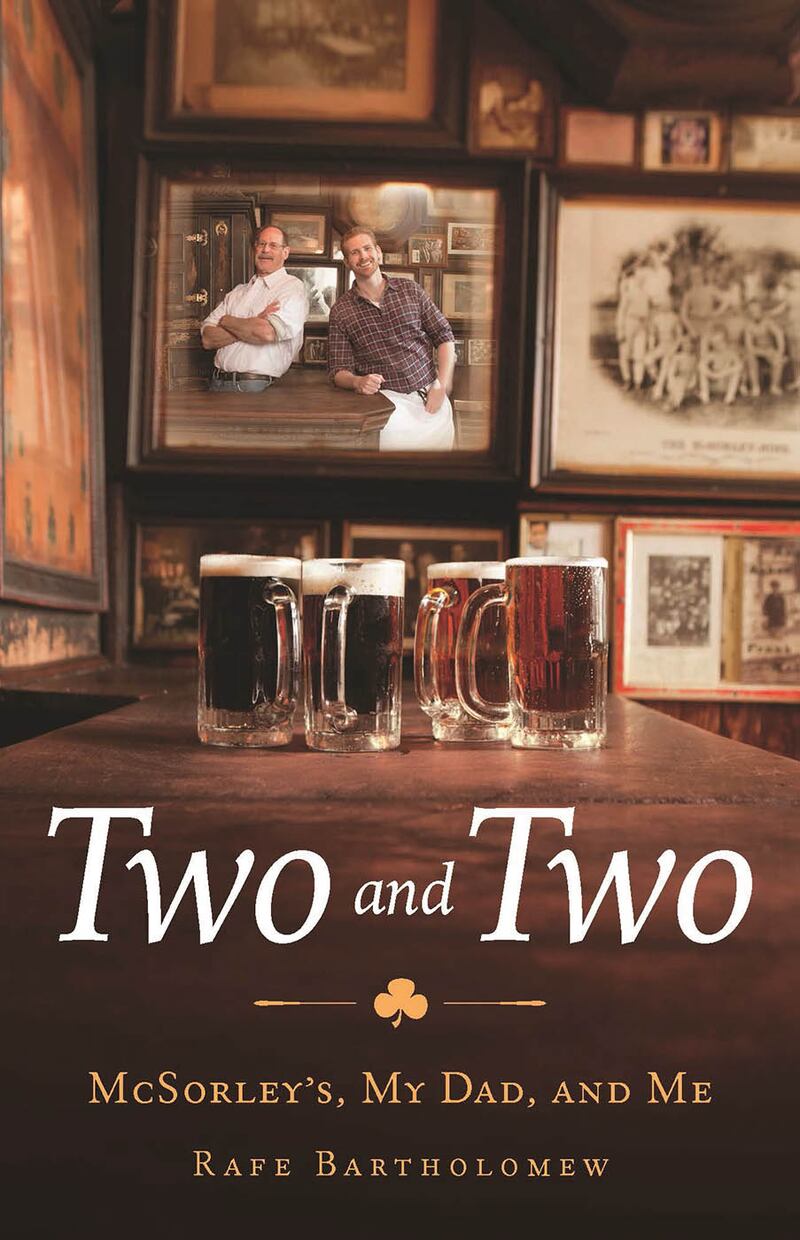
Rafe has been working on Two and Two since 2012. It was a bit daunting, as “Joseph Mitchell nailed the first hundred years of the bars,” he said. “Nailed it so well it’s sort of scary to even write about it now.” Fortunately, Rafe pressed on and has been able to capture the modern era, when McSorley’s became a landmark for drinkers from around the world in a rapidly changing East Village.





